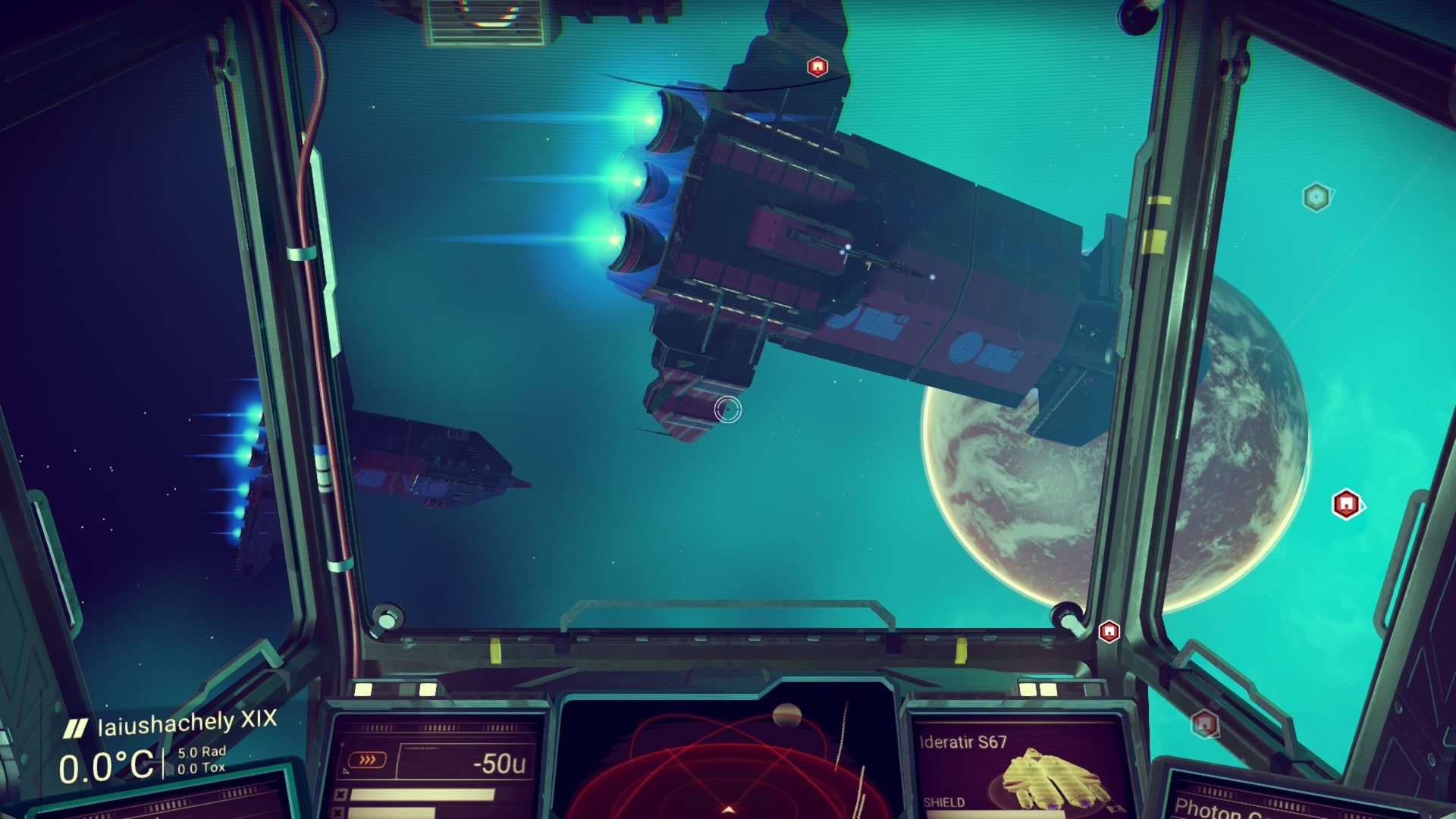

You have only three pieces of equipment: your spaceship, your exosuit, and your multitool. You mine with your multitool’s laser: rocks for iron, plants for carbon, red crystals for plutonium, giant obelisks for heridium, floating ovals for copper, and so on. It doesn’t take long to learn the rules of this universe. No Man’s Sky doesn’t take itself too seriously, as is obvious the first time you come across a planet whose climate is described as ‘emollient’ or a creature whose gender is ‘radical’ In the name of playability, Hello Games has erred on the side of accessible fantasy. Like in pre-CGI Doctor Who, when the aliens were costumed actors, everything is reassuringly people-sized. Still, there’s something charmingly human about the environments in which you find these aliens, with empty chairs at empty tables, lines of coffee cups, and even stairs with handrails. And despite the evidence of a vast spacefaring civilisation with its reaches in every corner of the galaxy, they’re always alone. There are only two identifiable characters, who appear at intervals to help you on your path, and the rest of the aliens are necessarily nonspecific, there to tell a story in a few lines of text and award you some resource: a blueprint, an upgrade, some new words, an improved relationship with their species. Early discussions of No Man’s Sky suggested the galaxy would be relatively unpopulated, but in some ways this highly populated version seems lonelier. These words help you understand the intelligent aliens you find holed up in outposts. And so, as well as the plants, animals and mineable resources, planets also feature discoverable locations, crates of supplies, ancient ruins and knowledge stones, which teach you new words in one of three alien tongues. Interact with terminals in abandoned buildings by knowing enough words in an alien language to determine which button to pressīut, of course, Hello Games needed to add a game to their engine, to give the player plenty to do. Flora and fauna too are surprising and delightful, as creatures as strange as user creations from Maxis’ Spore frolic in forests of giant flowers. The ability for the algorithm to generate astonishing landscapes is somewhat reminiscent of the wonders you can find in Minecraft, but No Man’s Sky is much more beautiful, smoothing the edges from mountains and rocky arches and sprawling cave networks alike. But once you’ve settled on the surface, the results are inevitably astounding. Sometimes you can see this generation in action, the terrain seeming to fizzle into existence around you as you land your ship on a new planet, the occasional underlying grid flashing before your eyes before it becomes a block of silicate instead.


But whatever the planet looks like, you’ll be able to journey across its surface and find plenty of the resources needed to fix your crashed spaceship. Because the galaxy is generated rather than designed, your starting planet might be hot or cold or toxic or radioactive, populated by trees or cacti or twisted vines, tinged red or yellow or green or brown or blue. Every player starts on a different planet near the edge of effectively the same galaxy, generated in the same way from the same seed, but with apparently no substantial multiplayer overlap, no chance to meet. The core promise, at least, is unquestionably fulfilled.


 0 kommentar(er)
0 kommentar(er)
